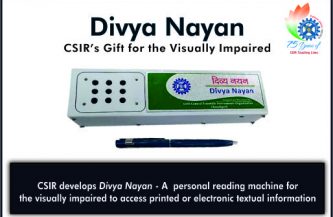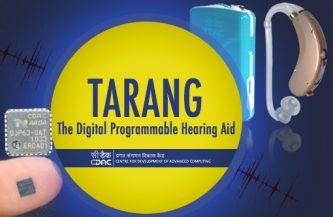CSIR – CSIO’s gift for people with special needs Mobility Assistive Gait Device for Rehabilitation-MITRA (मित्र)

Robots are becoming more interactive in assisting human beings in their daily lives, world over. They are now serving humanity in the fields of industry, defense and medicine.
Exoskeletons are also devices that reside in category of wearable robotics. Exoskeleton is an external structural mechanism with joints and links corresponding to those of the human body.
Exoskeleton with their applications in rehabilitation medicine and virtual reality simulation, offer benefits for both disabled and healthy populations. Exoskeleton device can be used as a capability magnifier or as assisting device for spinal cord injury patients, stroke patients, and the elderly.
CSIR-CSIO, working relentlessly in the area of Mobility Assistive Gait Device for Rehabilitation (MITRA) has designed and developed an active exoskeleton for lower limbs including actuated hip, knee and ankle joints for both limbs. It is a perfect example of technology serving human needs where it is required most, improving the quality of life of the millions in need of special assistance. The exoskeleton design not only assists humans but also tries to improve their gait. MITRA is a boon to paraplegics, aiding them to stand upright, walk and do exercises for faster rehabilitation.
The prime components of MITRA are: The Exoskeleton Suit, Control Hardware, Interfacing Circuit Board, Touch Panel, and Power System.
The exoskeleton system consists of a wearable exoskeleton suit, powered by actuators and a closed loop control system to drive the mechanism. An array of six electro goniometers comprises the feedback system of the controller. Depending on the feedback from goniometer, an angle-based control algorithm has been developed to drive the actuators for generation of desired pattern for movement of the limbs.
The device is purposely designed for therapeutic use under the supervision of a therapist or clinician. The exoskeleton has the functionality of independent exercise of the individual joints of the lower limb. Exoskeleton systems allow achievement of selective control of movement of joint with predefined speed. It features 6 Degree of Freedom (DOF) augmentations, for one for each hip, knee and ankle joints.
The twin wearable legs are powered by actuators, all controlled by a real-time microprocessor, which receives data from the sensors attached at each joint. The control algorithm is developed on LabVIEW FPGA platform. The data manipulation and the user interface design is done on LabVIEW real time environment. The device has multiple software modes for operation, sit-stand mode, walk mode, therapy mode, etc. The device is powered with rechargeable battery and can support 30 minutes of walking.
The electronics, controller, and the battery is packaged in to a back pack to be worn by subject. The wearer can operate the device through a touch display. The walk parameters can be recorded for analysis and quantification of gait rehabilitation. The first phase of trials of the device is under-way at the Indian Spinal Injury Centre, New Delhi. The device is capable of assisting a person of up to 100 kg with a height from 5 to 6 ft in gait activities. Presently, similar devices are manufactured by 4-5 companies worldwide. The device due to exorbitant cost is not affordable even to affluent people.
The MITRA device developed by CSIR-CSIO will be available at one-fifth of the cost of the imported devices.
{Feature has been uploaded by CSIR (Unit for Science Dissemination), Ministry of Science & Technology, New Delhi}.





